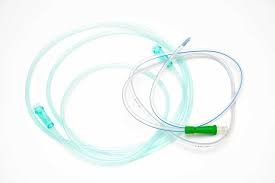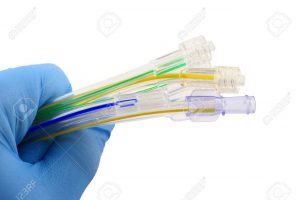What is medical tubing: Different Types of Latest Tubing?
29 January 21
What is the difference between G tube and J tube?
There are lots of small hand-held devices that physicians use during surgery. Medical tubing is also one of the most popular types of tubing technology that are helpful in complex surgeries.
Further, they have been designed for countless applications as well as they allow clinicians to control devices or fluid. Moreover, this tubing also allows for gas flow. You can easily see their uses in IVs and ventilators.
In addition, they are also useful to support the access devices and also as a delivery method for several devices. In this guide, you will know about these feeding tubes. What are they as well as you will learn, what is the difference between G tube and J tube?
Are you ready to dive in!
What is medical tubing?
Medical tubing has become the most common and helpful gadgets in the modern medical industry. These feeding tubes are popular to use for drainage and fluid management. Moreover, these are extremely useful to make use with,
- catheters
- anesthesiology
- respiratory equipment
- IVs
- peristaltic pumps
- biopharmaceutical laboratory equipment and many more.
In fact, feeding tubes are used to operate catheters in cardiac catheterization. Hence, physicians use these tubes to test for heart disease and locate narrowing blood vessels. Further, they measure pressure as well as oxygen levels in several different parts of the heart.
Medicines also need medical tubing for biopsy, check pump functions, diagnose congenital heart defects. And these tubes are also essential for identifying heart valve issues with the help of catheterizations.
Why there is difference in tubing?
Basically, the medical type of tubing is different from other kinds of tubing because of its designation for medical applications. This designation generally comes through certifications or standards that dictate material and specification requirements for tubes.
Hence, these requirements are actually able to make sure that the tools that physicians use for drug manufacturing and patient care is
- safe
- and reliable.
Actually, there are 2 most common types of medical tubing that are used in the market of medical devices. These are
- urinary catheters
- and vascular catheters.
Urinary catheters:
These types of medical tubes are commonly used to drain and collect urine from the bladder. Further, they are useful for,
- Monitor urine output
- Diagnose disorders in the lower urinary tract
- Also, introduce medication.
If you want extreme flexibility, you should select low durometer polymers. Such as Pebax resins, soft TPU, Isothane 5075A, etc.
Vascular catheters:
They are used to get access to the blood vessels of the human circulatory system to execute a variety of therapeutic and diagnostic processes. But these processes totally depend on the kind of devices.
These kinds of medical tubing are used when patients need fluids and IV medicines. Furthermore, they are also used to place inside the vein of the arm. Additionally, they can remain in the vein for many weeks.
What is IV medical tubing made of?
In fact, IV medical tubing is flexible, thin, and plastic hoses. They are used to run from a bag or bottle of medicine into a tiny needle or intravenous catheter placed in a vein in your body. These are actually very small and extremely flexible tubes.
These are greatly beneficial for several treatments. Moreover, these are also used to put blood products, medicines, fluids, and nutrients just into your blood. Basically, this tubing has been produced in various diameters and lengths.
They are essential to link the IV bag to the patients. These tubings are created by using polyethylene, PVC, and polypropylene plastic. Moreover, PVC tubing has been softened with plasticizers in order to make it flexible.
What is the difference between G tube and J tube?
G-tube:
It is one of the most common types of medical tubing. G-tube is very useful for those people who can’t take in the right amount of necessary nutrients. So, such patients have to depend on these tubes to take in essential nutrient support.
It has to be inserted into their stomach by making a tiny cut in their abdomen. Hence, G-tube is mainly a feeding tube for a gastrostomy.
J-tube:
It is also another very common and famous type of medical instrument. Further, it can help to provide the body with adequate medications and nutrients. This tube has to be inserted into the middle part of the intestine.
Moreover, these very useful medical tubing but you have to use them when G-tubes are not a suitable option. In addition, you can also use these tubes in the conditions when the tube has to put for permanent uses. But these tubes are very complicated.
Hence, you can’t change them at home. Actually, you need radiology to change these tubes. The J-tubes are generally long or maybe in the form of buttons. The J-tube actually stands for a jejunostomy feeding tube.
What is cantor medical tubing used for?
These types of feeding tubes are long as well as single-lumen intestinal tubes. Generally, they are used to stent or decompress the small intestine. Its length is 10 feet. Additionally, this medical tubing is useful to use for intestinal decompression.
It has a special tab of mercury-weighted rubber that is attached to its perforated tip. It helps to carry the tube through the stomach and intestine.
Can you still eat food if you have a feeding medical tube?
Patients who have been treated by using a feeding medical tube must consult their doctor. Moreover, they can also consult a speech-language pathologist to determine whether they can swallow food or not. They will guide such patients if swallowing food is safe for them or not.
If a patient can easily eat and digest food by mouth safely; then she/he can positively eat food. Moreover, such patients also should confirm that eating food by mouth will not hurt this tube. As well as by using the tube won’t make it unsafe to eat.
What illnesses require a feeding medical tubing?
Here we are providing you the more common conditions in which using feeding medical tubing is essential. So, these are:
- neurologic and neuromuscular disorders,
- failure to thrive,
- prematurity,
- inability to swallow,
- anatomical and post-surgical malformations of the esophagus and mouth,
- Sanfilippo syndrome,
- cancer,
- digestive disorders.
Is there an alternative to feeding medical tubing?
It is a fact that in comparison to tube feeding, hand feeding appears to be a better alternative. It is better especially for older adults with advanced dementia.
Basically, tube feeding can reduce the risk that food will end up in their lungs and can cause pneumonia.
What is the life expectancy of a person with feeding medical tubing?
For almost 216 remaining patients, life expectancy without the feeding tube was a median of 1–2 months. Further, it has increased to an expected life expectancy of a median of 1–3 years by using a feeding tube.
What is the tubing in your nose called?
The NC (nasal cannula) is a special kind of medical tubing device. It is common to deliver increased airflow or supplemental oxygen to a patient or person who needs respiratory help. Moreover, this device includes a specific lightweight tube that on one end splits into two prongs.
They have to place in the nostrils and from which a mixture of oxygen and air flows.



